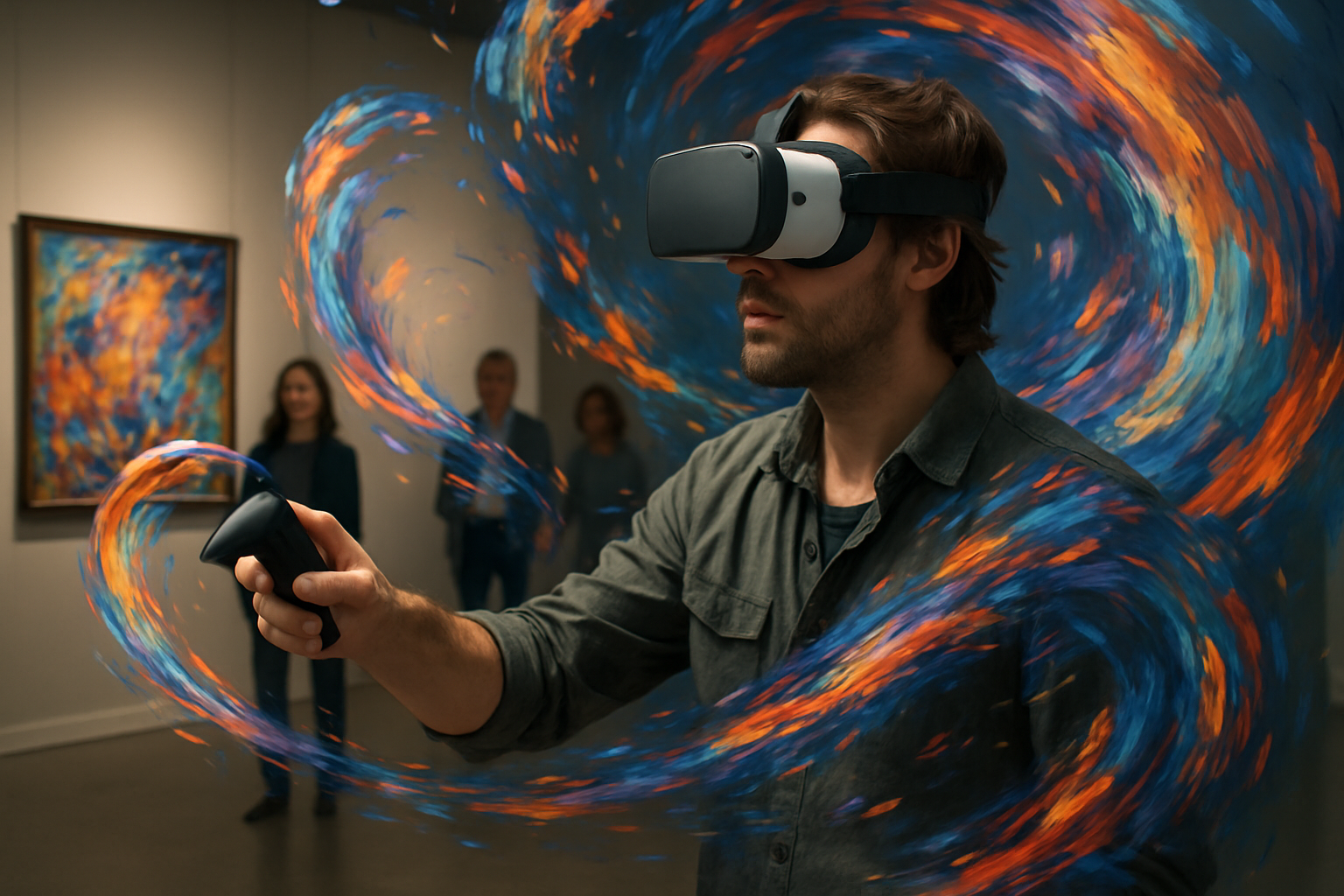Augmented Reality Art: Blending Digital and Physical Realms
In the ever-evolving landscape of contemporary art, a groundbreaking fusion of technology and creativity is reshaping how we experience and interact with artistic expressions. Augmented Reality (AR) art, a cutting-edge medium that overlays digital elements onto the physical world, is revolutionizing galleries, public spaces, and even our smartphones. This innovative art form is not only pushing the boundaries of traditional artistic practices but also challenging our perceptions of reality and space.

Bridging the Digital Divide
AR art stands at the intersection of the physical and digital realms, creating a unique hybrid space where creativity knows no bounds. Unlike virtual reality, which immerses users in a completely digital environment, AR enhances the real world with digital overlays. This distinction allows artists to engage with physical spaces in unprecedented ways, adding layers of meaning and interaction to existing environments.
Tools of the Trade
The rapid advancement of AR technology has put powerful tools in the hands of artists. Smartphones and tablets, equipped with sophisticated cameras and sensors, have become the primary canvases for many AR artists. Platforms like Apple’s ARKit and Google’s ARCore have democratized the creation process, allowing artists with varying levels of technical expertise to bring their visions to life.
Breaking the Frame
One of the most striking aspects of AR art is its ability to transcend traditional spatial limitations. No longer confined to canvases or pedestals, artworks can now occupy entire rooms, cities, or even the globe. Artists like Keiichi Matsuda have created AR installations that transform urban landscapes into vibrant, interactive experiences, blurring the lines between architecture and digital art.
Interactivity and Audience Engagement
AR art fundamentally changes the relationship between artwork and viewer. Passive observation gives way to active participation as audiences use their devices to uncover hidden layers, manipulate digital elements, and even contribute to the piece itself. This level of engagement fosters a deeper connection between art and viewer, creating personalized experiences that can evolve with each interaction.
Challenges and Controversies
As with any emerging art form, AR art faces its share of challenges and controversies. Questions of ownership, copyright, and preservation loom large in a medium where artworks can be easily replicated or altered. Additionally, the reliance on technology raises concerns about accessibility and the potential for technological obsolescence.
Cultural Impact and Future Prospects
AR art is not just reshaping the art world; it’s influencing broader cultural and societal trends. Museums and galleries are adapting to incorporate AR exhibits, while brands are exploring AR as a new frontier for advertising and consumer engagement. As the technology continues to evolve, the potential applications for AR in art and beyond seem limitless.
The Artist’s Perspective
For many artists, AR represents a new frontier of creative expression. Renowned AR artist Sander Veenhof sees the medium as a way to challenge traditional notions of art ownership and distribution. His work often explores themes of public space and digital rights, using AR to create installations that exist simultaneously everywhere and nowhere.
Educational Potential
Beyond its artistic merits, AR art holds significant educational potential. Museums and educational institutions are leveraging AR to create interactive exhibits that bring history, science, and culture to life. This immersive approach to learning has the power to engage students and visitors in ways traditional methods cannot, fostering a deeper understanding and appreciation of complex subjects.
In conclusion, Augmented Reality art stands at the forefront of a new artistic renaissance, blending technology and creativity in ways previously unimaginable. As AR technology continues to advance and become more accessible, we can expect to see even more innovative and boundary-pushing works that challenge our perceptions and expand the very definition of art. The future of AR art is not just bright; it’s a vibrant, interactive, and ever-expanding universe of possibilities waiting to be explored.





